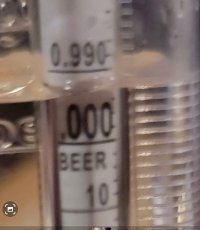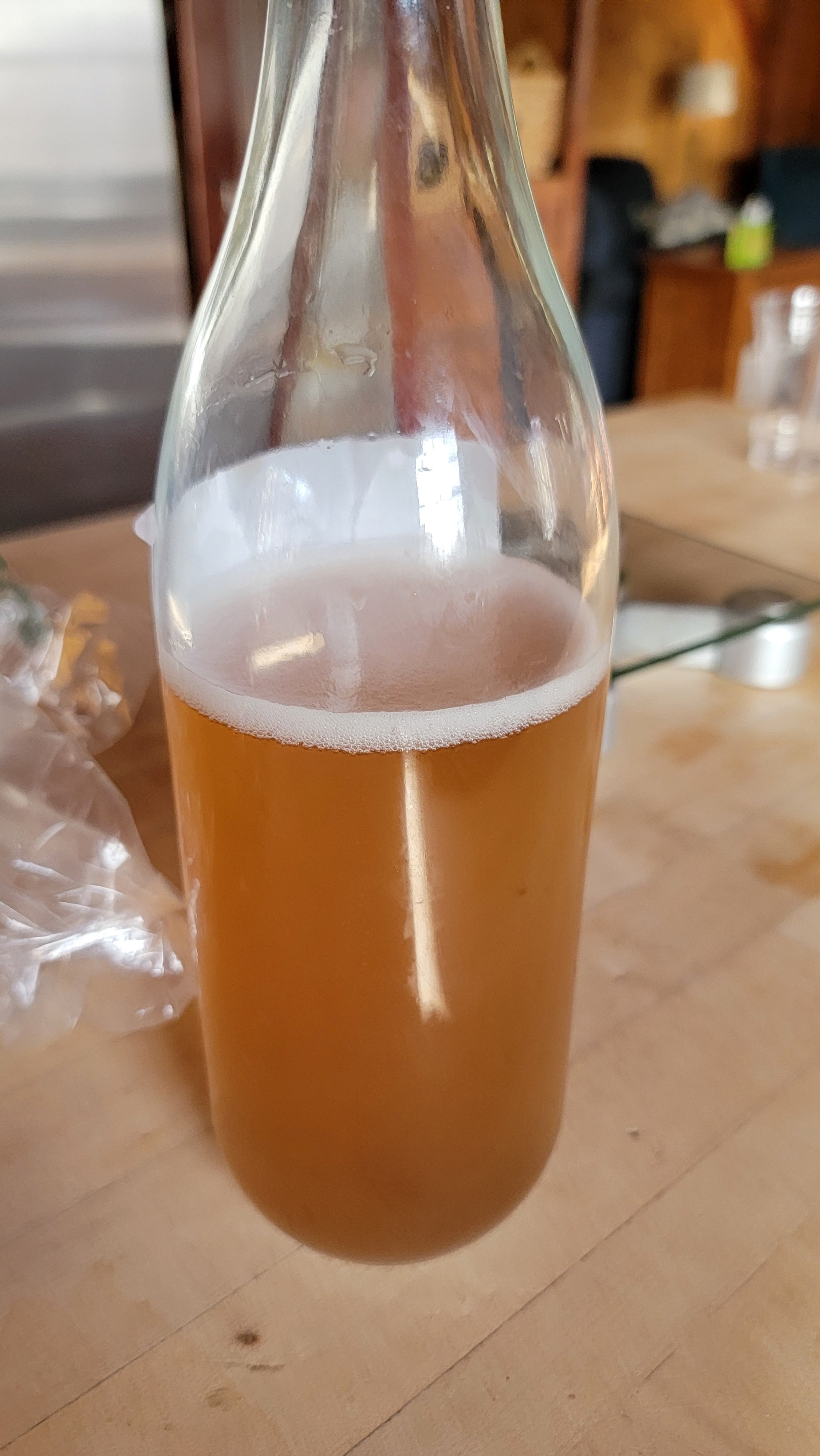Yes, trying to bottle condition and sweeten can be a bit of a mission.
Rather than worry about on-line priming calculators, I use an alternative approach of adding sugar to increase the SG above the FG to generate the sweetness and CO2 volumes that I want.
I don’t use a priming calculator because I find it is easier to go back to first principles and use SG as a guide to adding sugar. It makes life easier because you just have to make up a sugar syrup or juice or concentrate and add it into the bottling bucket until you reach the target SG increase. It results in even distribution of the sugar when bottling.
It works this way…
For carbonation, sugar ferments into 47% CO2 (plus 48% alcohol and 5% other compounds). CO2 has a density of 1.87g/L at 15C (a typical fermentation temperature for cider). So, the amount of sugar needed for a volume of CO2 (i.e. a litre of CO2 in a litre of cider) is 1.87g/L divided by 47% = 3.98 grams (near enough to 4 grams).
Specific gravity tables* for apple juice show that a change of one gravity point (SG 0.001) results from fermenting 2 grams of sugar per litre. So, fermenting 3.98 grams (say, 4 grams) of sugar will change the SG by two gravity points (0.002).
Also, this aligns with the often quoted “two teaspoons of sugar per litre” for bottle conditioning (2 gravity point = 4 grams of sugar x 2.5 volumes = 10 grams =2 teaspoons of sugar in a litre).
As a rule of thumb, fermenting 2 gravity points (4g/L of sugar per litre ) will result in one volume of CO2.
For sweetness, the cider needs residual unfermented sugar. As above, specific gravity tables* for apple juice show that one gravity point (SG 0.001) results from 2 grams of sugar per litre. Two teaspoons of sugar (10 grams) per litre is about the same sweetness as half a teaspoon of sugar in a cup of coffee, which is what I aim for in my sweeter ciders. So, 10 g/L of sugar accounts for 5 gravity points (SG 0.005). Incidentally this would be classified as something like medium-dry to medium under BJCP guidelines.
As a rule of thumb, 5 gravity points of residual sugar (10g/L of sugar per litre) will result in medium-dry to medium sweetness cider.
As an example, a litre of cider aiming to finish about medium dry with 2.5 volumes of CO2, needs to ferment 5 gravity points then be pasteurised to stop fermentation with 5 gravity points of residual sugar remaining for sweetness. This can be achieved by fully fermenting then adding sugar to start at SG 1.010 (20 g/L of sugar) or "on the way down" if you are confident about what the FG will be.
It is a bit of a “rough and ready” approach, but in practical terms the results are quite consistent for for my home craft cider.
*A note about specific gravity tables for apple juice…
If you look at a specific gravity table, you will see that some show that it takes 2.5 grams of “sugar” per litre to increase SG by 0.001. What they really mean is 2.5 grams of Total Solids, of which only 80% is sugar (the other 20% is non-fermentables like acids, tannins, etc).
So, if juice or juice concentrate is added to increase the SG, 2.5 grams per gravity point increase is correct. But if straight sugar is added (e.g. sugar syrup), the Total Solids figure needs to be discounted by 20% to 2 grams per gravity point or look at tables that show SG vs Sugar as well as Total Solids (Jolicoeur and Proulx & Nichols have such tables).
Have fun once your head stops spinning!
P.S. Alex Simmens of Llanblethian Orchards in Wales U.K. has written an excellent "Bottle Conditioned Cider Guide". I originally used the guide to develop the above approach. The guide covers the whole topic in much more detail, dealing with product style, bottles, yeast, sulphite, pasteurisation and trouble shooting. It is easiest accessed by Googling "Llanblethian Cider: Bottle Conditioning".





![20240312_155630[1].jpg](https://cdn.homebrewtalk.com/data/attachments/784/784594-c13b75d924bdd2bea977b79d3e73d1ad.jpg)
![20240312_155844[1].jpg](https://cdn.homebrewtalk.com/data/attachments/784/784595-6367781de3ded724bd091462d747e345.jpg)
